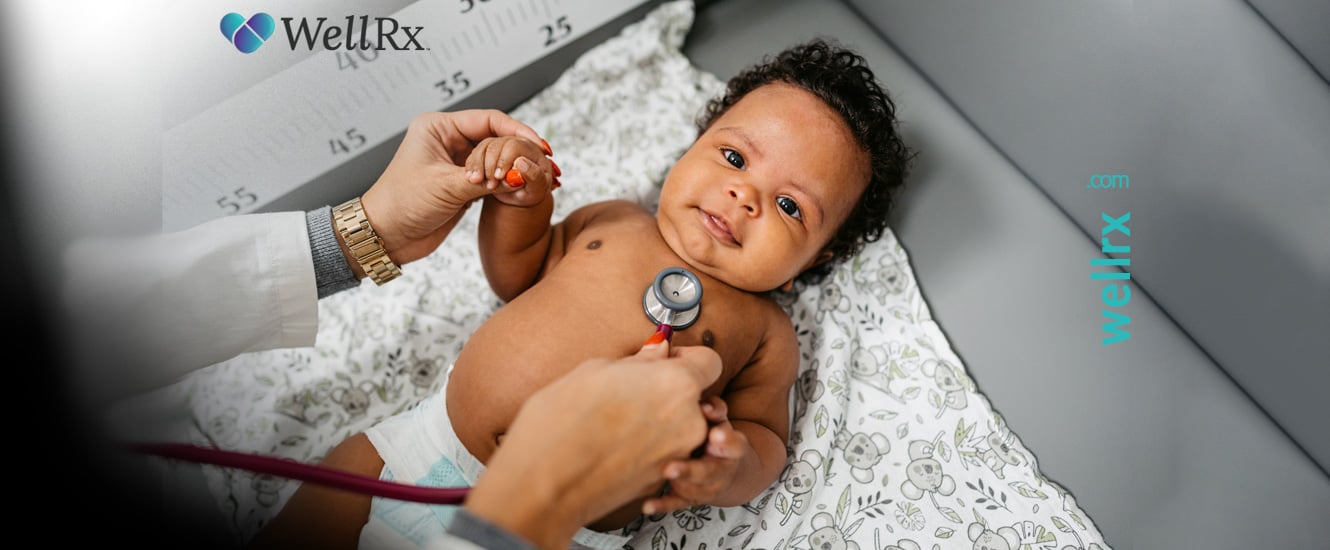Post-traumatic stress disorder (PTSD) not only affects combat veterans but also first responders, victims of natural disasters, and any child or adult who has experienced or witnessed a traumatic event. It may surprise you to learn women experience PTSD twice as often as men (8% vs. 4%), and up to 50% of children develop PTSD after natural disasters.
Let’s look at the causes, symptoms, diagnosis, and therapy for PTSD. We’ll also look at medications used for PTSD and how to compare prescription prices for these medications at a pharmacy near you.
Causes of PTSD
PTSD occurs after you’ve been exposed to an extremely traumatic event. It can develop after you’ve personally experienced trauma or witnessed it. Traumatic events include:
- Experiencing or witnessing combat or accidents
- Being injured
- Witnessing someone else’s injury or death
- Being assaulted or threatened with assault with a weapon
- Experiencing first-hand sexual violence or witnessing it
- Suffering from physical or emotional abuse during childhood
- Being a victim of a natural disaster
- Learning you or a loved one has a life-threatening medical condition
- An unexpected or shocking death of a loved one or friend
- Experiencing or hearing about an act of terror
This list could go on and on. The bottom line is this: any event that traumatizes you, a friend, a loved one, or someone you see or meet through your work as a first responder can cause PTSD. A traumatic event that leads to a feeling of helplessness, a feeling of horror, or extreme fear can cause PTSD.
Not everyone who is exposed to extreme trauma develops PTSD. Some may process the event quickly and not suffer from PTSD. For others, the traumatic event may lead to PTSD or other conditions such as depression or anxiety.
Demographics
PTSD has been linked to veterans since World War I, when it was called “shell shock.” But PTSD affects children and adults. Statistics for the United States show trauma affects millions of people throughout their lifetimes:
- 60% of men experience at least one traumatic event, including combat, physical assault, accidents, or injuries
- 50% of women experience at least one traumatic event, especially child abuse, domestic abuse, or sexual violence
About 12 million Americans currently suffer from PTSD.
PTSD Among Veterans
PTSD has been linked to combat veterans for good reason. The percentage of military combatants with PTSD varies by war, with Vietnam veterans having the highest rate of PTSD. Thirty percent of Vietnam vets have had PTSD at some point in their lives, as compared to 11 to 20% of Iraq war veterans.
Another common cause of PTSD in both women and men in the military is sexual assault.
PTSD Among Women
PTSD is twice as common in women than in men. Statistics show one in three women is sexually assaulted during her lifetime. This likely causes a higher rate of PTSD in women. Other factors contributing to this difference include:
- Childhood abuse or neglect
- Domestic abuse
- The sudden death of a loved one
PTSD Among First Responders
A higher percentage of first responders (paramedics, police officers, firefighters, and search and rescue crews) suffer from PTSD than the general population. As many as one in three may have PTSD at some point in their careers.
It comes as no surprise. First responders repeatedly face traumatic events as part of their jobs. The COVID-19 pandemic, the rising numbers of opioid overdoses, car accidents, house fires, mass shootings, and natural disasters all take their toll.
PTSD Among Victims of Natural Disasters
Any life-threatening natural disaster you’re exposed to, whether it injures you or a loved one, destroys your home and belongings, or affects someone you know across town, can cause PTSD. In the wake of hurricanes, wildfires, earthquakes, tornadoes, and floods, about a quarter of those who experience a natural disaster develops PTSD.
Children who experience a natural disaster are at greater risk of developing PTSD than adults. Up to 50% of children have symptoms of PTSD, likely from the loss of control and security they feel. Other children develop anxiety or depression after a natural disaster.
The National Child Traumatic Stress Network offers some guidance on how to help a young child cope and heal after a natural disaster.
Risk Factors
How you mentally process or cope with your traumatic experience varies from person to person, as does the likelihood of developing PTSD. But it goes beyond this.
PTSD occurs more often if you have these risks beforehand:
- Are a woman
- Have a family history of anxiety or PTSD
- Have other mental health disorders, including anxiety or depression
- Are introverted
- Are pessimistic or have a negative worldview
- Have a neurosis that causes excessive worry and chronic distress
Your PTSD risk also climbs depending upon the event itself:
- Was the event life-threatening?
- Did you feel trapped or experience extreme fear?
- Did you personally experience the trauma or witness it?
Finally, your risk of PTSD varies by the support you get after the traumatic event. Having little or no social or professional support may lead to PTSD.
Diagnosing PTSD
To be diagnosed with PTSD, you need to have experienced or witnessed a traumatic event, learned a close friend or loved one was traumatized, or be regularly exposed to other people’s trauma. You also need to have symptoms lasting at least a month.
Your healthcare provider will ask you about symptoms of PTSD that occur in three broad categories — re-experiencing, avoidance, and arousal symptoms.
Re-Experiencing Symptoms
The most common symptoms are called re-experiencing symptoms. The traumatic event gets reviewed over and over in your mind. You may have:
- Recurrent dreams about the event
- Flashbacks
- Intrusive memories or thoughts about the event that interrupt your day-to-day activities
- Emotional distress related to memories of the trauma
- Physical distress — sweating, rapid breathing, pain, nausea, tremors, etc. — related to memories of the trauma
Avoidance Symptoms
As you try to avoid any reminder of the trauma, you avoid places and people who remind you of the event. You may withdraw from things you used to enjoy or dive into work or hobbies to avoid thinking about the traumatic event. Avoidance symptoms include:
- Actively pushing thoughts and feelings about the traumatic event out of your mind
- Loss of memory surrounding the event’s details
- False thoughts that you could have prevented the event
- Detaching from others
- Blunted mood, emotions, and feelings
- Difficulty finding joy
- A pessimistic outlook on the future
Hyperarousal Symptoms
With heightened arousal, you are always on edge. Symptoms reflect the hypervigilance you’ve adopted to protect yourself from another traumatic event. Symptoms include:
- Insomnia
- Irritability or lashing out
- Trouble concentrating
- An exaggerated startle response
- Engaging in risky or reckless behavior
You can get an idea about the types of questions you’ll be asked by looking at this PTSD self-test. This test is not a substitute for a visit with your healthcare provider.
Treating PTSD
PTSD is different for everyone. For many people with PTSD, treatment under a psychiatrist or mental health professional is needed. Seeking treatment early gives you the best chance for a full recovery.
Treatment includes both talk therapy (psychotherapy) and medications.
Trauma-Focused Talk Therapy
This type of talk therapy zeroes in on your memories of the traumatic event and helps you sort through your feelings and thoughts surrounding the event.
Four types of trauma-focused talk therapies have been proven to be effective. They are:
- Cognitive processing therapy — helps you change your thoughts and feelings surrounding the trauma
- Prolonged exposure — provides a gradual look at the trauma-related feelings, memories, and thoughts you’ve been avoiding
- Eye movement desensitization and reprocessing — when you process information about the trauma while focusing on a back-and-forth movement
- Written exposure therapy — when you complete writing assignments that focus on your trauma
Trauma-focused talk therapy generally lasts three to four months.
Additional types of talk therapy help you manage your PTSD symptoms as you face day-to-day obstacles:
- Stress inoculation training
- Present-centered therapy
- Group therapy
PTSD Medications
Four medications have been proven to help treat PTSD. These medications restore the balance of the brain’s neurotransmitters (chemical messengers):
Three other medications may help treat PTSD, but their effectiveness hasn’t been studied as much. They are:
Benzodiazepines treat anxiety, but they don’t work for PTSD. They’re also addictive. Your treatment program should not include this class of drugs.
Saving Money on PTSD Medications
The medications used to treat PTSD are generic, so you’d expect they’d be inexpensive. They can be, but it depends on the pharmacy. At ScriptSave® WellRx, we make saving money on your prescriptions easy, allowing you to focus on your recovery.
Here’s how it works: You enter the medication name and your zip code. In a fraction of a second, you can compare prescription prices at a pharmacy near you. A quick search on WellRx shows sertraline (Zoloft) costs $6 at one pharmacy and nearly $48 at another pharmacy nearby.
To get coupons for medications, learn about how prescription discount cards work, and receive your free Rx savings card, visit WellRx or watch our 30-second video.
Ways to Cope with Trauma
PTSD can’t be prevented 100% of the time, but seeking treatment early after a traumatic event can help. You can also take some steps that may protect you from developing PTSD. They include:
- Telling your loved ones about the trauma
- Seeking support from family, friends, or clergy on an ongoing basis
- Looking at yourself as a survivor rather than a victim
- Taking care of your physical, emotional, and spiritual needs
- Helping others heal after trauma
- Believing you can fully recover
Teresa Otto, MD, is a freelance medical writer on a mission to inform readers about the positive impact of good nutrition and a healthy lifestyle. She is a retired anesthesiologist who practiced in Billings, Montana, for most of her career. She graduated from the University of Washington School of Medicine in Seattle and did her anesthesia residency and fellowship at New York University and Columbia-Presbyterian in New York.
Resources:
- https://www.webmd.com/mental-health/neurotic-behavior-overview
- https://www.everydayhealth.com/ptsd/causes-risk-factors-when-seek-help/
- https://institutesofhealth.org/ptsd-in-first-responders/
- https://unitedbrainassociation.org/2019/12/31/ptsd-the-reality-of-post-disaster-trauma/
- https://www.srcd.org/research/understanding-impacts-natural-disasters-children
- https://www.nctsn.org/resources/after-crisis-helping-young-children-heal
- https://www.sciencedirect.com/topics/medicine-and-dentistry/acute-stress-disorder
- https://www.nhs.uk/mental-health/conditions/post-traumatic-stress-disorder-ptsd/symptoms/
- https://www.webmd.com/mental-health/do-i-have-ptsd
- https://www.psycom.net/ptsd-test
- https://www.ptsd.va.gov/understand_tx/talk_therapy.asp
- https://adaa.org/learn-from-us/from-the-experts/blog-posts/consumer/how-prevent-trauma-becoming-ptsd













 Store & manage your medication list
Store & manage your medication list Medication pricing updates
Medication pricing updates Pill & refill reminders
Pill & refill reminders Medication journal & mood log
Medication journal & mood log